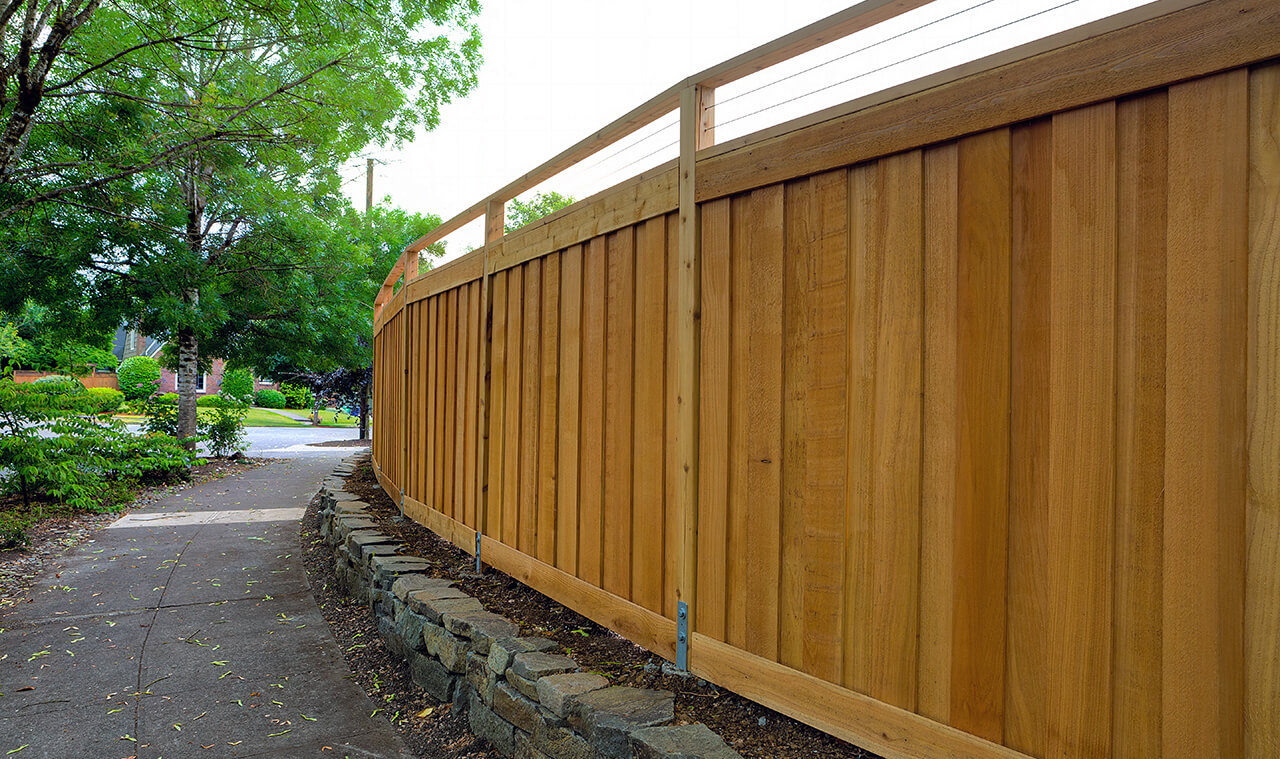- Fence Maintenance
Tips for Preventing Water Stains on Wooden Fences
Wooden fences possess a classic appeal, as they pair well with a wide variety of home styles and landscaping designs. However, they are also particularly susceptible to collecting water stains from snow and rain on the Colorado Front Range.
How to Protect a Wooden Fence from Water Stains
Winter weather can be detrimental to numerous physical structures and systems on your property, including your fence. In particular, rain and snow can leave behind unattractive and damaging water stains. Here are a few tips to help you protect and maintain your wooden fence to keep it looking fresh and maximize its lifespan:
Clean the Fence Regularly
Snow and rain can cause water stains, and dirt, moss, and mildew buildup can exacerbate damaging moisture build-up that leaves behind stains. You should clean your fence regularly, either by hand or using a pressure washer or power washer. Power washing can be effective for cleaning off mold. If the pressure is too high, though, it can splinter the wood, so you have to be careful. As you’re washing your fence, pay special attention to the spaces between the posts and other cracks and crevices where mold and moss typically collect.
Seal or Stain the Wood
One of the best methods for preventing rot, mold, and water stains is to seal or stain the wood about once per year—ideally before the start of winter. Depending on the type of wood, you may not need to stain or seal the fence so frequently. Applying a protective layer to the fence seals the wood and prevents it from being penetrated by water in the first place. Additionally, sealants can protect your fence from insects and other pests. If you don’t want to change the natural appearance or color of the wood, you can use a clear, oil-based sealant. If you want to change the color of your fence, you can use paint, which has a similar effect in terms of sealing and protecting the wood.
Clear Snow Away
After a big snowstorm, shovel away piles of snow that have collected in the spaces between and around your fence posts. If the snow is heaped against the post a long time, exposing it to continual moisture, the wood may develop deep water stains.
How Do You Remove Water Stains from a Wooden Fence?
Even the best-laid maintenance plans can go awry or may not completely protect your wooden fence from getting water stains. If you end up getting these unsightly blemishes on your wooden fence, here are a few ways to deal with them:
Clean Off the Stains
To actually remove water stains from your fence, there are a few different liquid solutions you can make at home and apply to the wood. One type of solution is half cool water and half bleach. Another is equal parts hydrogen peroxide and water. For cedar fences, you can try a mild citric acid–based cleaner. Before you try to wash away stains on your fence with a chemical solution, however, do some research or speak with a fencing professional. What solution is best in your situation may depend on the type of wood used for your fence and how long the water stains have been there.
Cover the Water Stains
If your fence has already collected water stains, but is otherwise structurally sound, you can cover them up with a fresh coat of paint or stain. Also, as noted above, adding a new layer of paint, stain, or sealant can help prevent the wood from acquiring new water stains in the future.
Replacing or Repairing Your Fence
If all else fails or your wooden fence has experienced severe water damage from rain or snow, you may need to replace individual boards or posts to freshen up the appearance of the entire structure. Before you make any drastic decisions that could cause more harm than good, speak to the professionals at Split Rail Fence Company. They can discuss your particular fencing issue and what maintenance solutions, which may include replacing certain pieces or materials on your wooden fence to make it look good as new.
